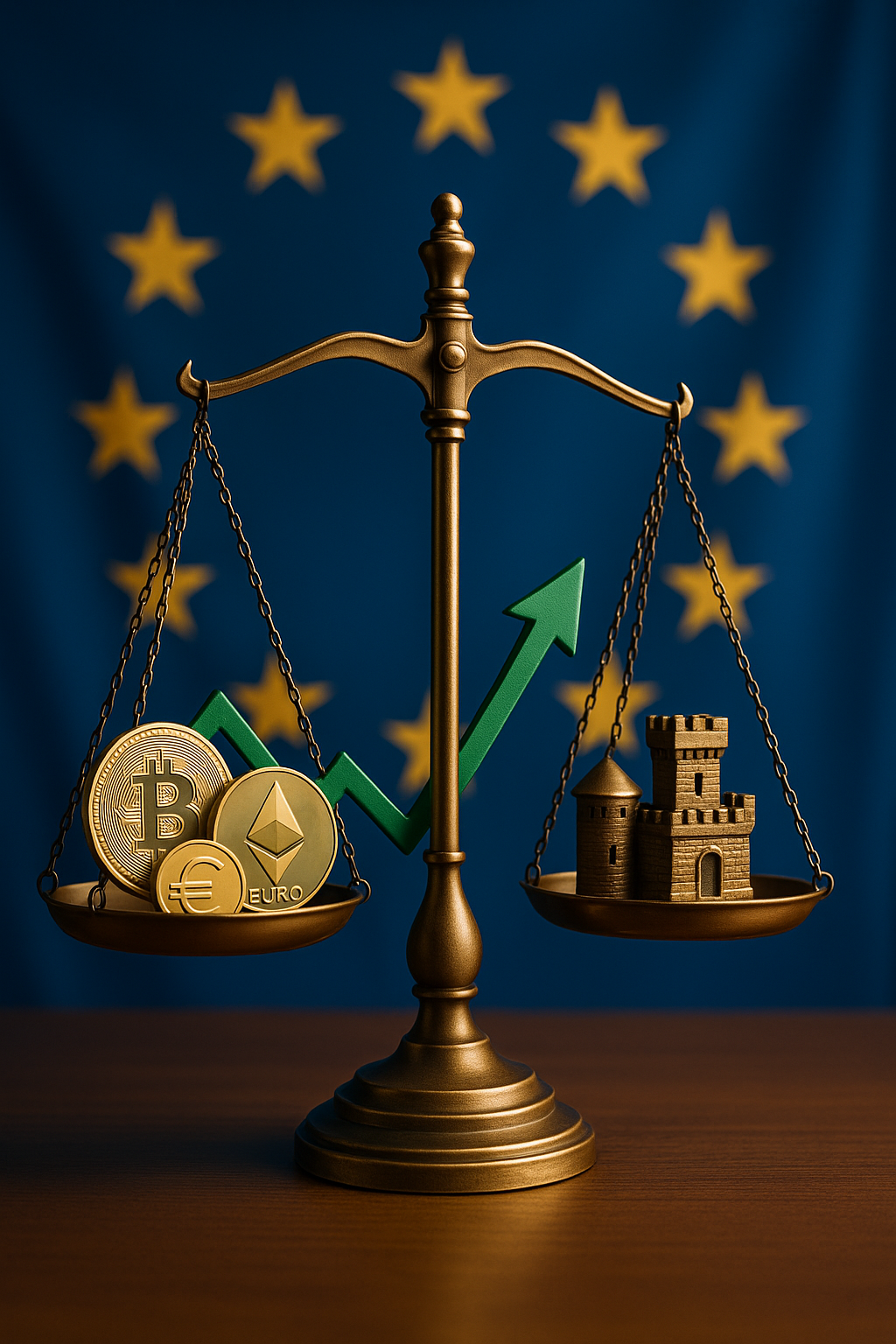So Much for “Crypto Runs Faster Than Regulators”
Anyone still parroting that line clearly missed the chatter we’ve been hearing on the desk for weeks. The European Union’s brand-new crypto framework—licenses for every exchange, 14% tax on gains, 57% reserve rule for DeFi, the whole nine yards—didn’t come out of thin air. We’ve been watching the Brussels lobby circuit light up like a Christmas tree on the Nansen wallet labels since late Q1.
Here’s What Actually Happened
The EU’s financial authority rolled out a comprehensive regulatory package set to kick in three months from now. The cliff notes:
- All exchanges operating inside the bloc need a license—no more hiding behind a .io domain and a Maltese mailbox.
- 14% flat tax on crypto gains, collected at withdrawal or at the point of sale on stablecoin pairs.
- DeFi protocols must register and hold a chunky 57% on-chain reserve; think MakerDAO’s surplus buffer on steroids.
- An EU-backed €217 million insurance fund to backstop exchange blow-ups—nice, but peanuts if we see another Terra-scale fiasco.
- Privacy coins get the microscope: Monero, Grin, and any Mimblewimble fork must integrate transaction monitoring hooks. Good luck with that, devs.
- International venues get 12 months to comply or get the boot.
Local boys Kraken and Huobi released the usual “we welcome clarity” PR fluff. I’ll give them this: they’ve both been quietly hiring compliance talent off Coinbase for half a year, so they’re not bluffing.
Now Here’s the Interesting Part
We pulled up the order books the moment the news hit BeInCrypto’s RSS feed. Instead of a knee-jerk sell-off, BNB ripped 4.3% in under ten minutes. That’s your tell. Big players have decided this framework—harsh as it looks—reduces tail risk for the entire sector.
I fired up Coinalyze and saw perpetual funding on EU-facing exchanges flip positive for the first time this week. Someone’s stuffing longs, and it’s not the retail crowd with 2x leverage on Bybit. My money’s on German pension funds testing the waters—they’ve been sniffing around since BaFin green-lit crypto Spezialfonds.
Why This Matters for Your Portfolio
1. Compliance premium is real. I’ve noticed assets with a clear regulatory path—think BTC, ETH, and yes, even BNB—trade at a growing premium versus the long-tail degens. Expect that spread to widen once the 14% tax makes yield-chasing less attractive on the fringes.
2. DeFi’s reserve rule reshuffles TVL rankings. Protocols that can’t cough up 57% in hard collateral will either geofence EU traffic or spin up capped pools. I’m already trimming positions in smaller yield apps and rotating into Aave—Stani has been warming up to lawmakers longer than most people have been in crypto.
3. Privacy coin capitulation? Monero’s core devs publicly said KYC hooks are a non-starter. I wouldn’t be surprised to see liquidity fragment as EU-based market makers step back. Keep an eye on Hodl Hodl’s OTC spreads—they’re the canary here.
Tangential Thought: Digital Euro by 2026
People keep asking if the incoming CBDC nukes stablecoins. In my experience, central banks move at glacial speed. By the time a digital Euro ships in 2026, Tether will have rolled out three more chain integrations and Circle will have a MiCA-compliant euro-backed stable in every wallet. Remember when the Digital Pound was “imminent” back in 2019? Yeah, me neither.
War Story From the Floor
Flashback to 2017—China bans ICOs, market tanks 30% overnight, and a junior trader next to me panic-market-sold a bag of ETH at $198 average. Two weeks later ETH was back above $300. Regulation sparks fear, but clarity almost always rerates solid projects higher once the dust settles. Same playbook here.
"Regulatory certainty is like oxygen to institutional allocators—boring but absolutely necessary." — old PM I used to trade FX options for
What the Charts Aren’t Telling You
Glassnode’s exchange flows show a net outflow of 12,700 BTC from EU-domiciled platforms since the announcement. Retail is moving coins to cold storage ahead of tax season, but whales are cycling capital through Swiss and Singapore desks. It’s a regulatory arbitrage relay race, and it never really ends.
Meanwhile, Dune dashboards tracking Uniswap v3 show EU IP traffic down 8% in the first 24 hours. That’s latency arb bots pulling back to avoid being classified as “operators.” Eerie echo of the 2018 BitLicense exodus.
Where the Opportunity Lies
1. Reg-tech tokens. Keep an eye on Quant (QNT) and Civic (CVC). They actually pump every time a new KYC rulebook drops.
2. Insurance primitives. With a €217 million official backstop, Nexus Mutual and InsurAce can pitch complementary coverage. I’ve already seen the Telegram whales talking about stacking NXM on this narrative.
3. Asia-Pac copycats. MAS in Singapore and ASIC down under love blueprints they didn’t have to pay consultants for. If Brussels becomes the de facto template, expect cross-jurisdiction ETFs to breeze through approvals. That’s your cue to front-run the inflows.
Quick Gut-Check Before I Let You Go
Yes, 14% feels steep, but most French and German traders were already paying near that effective rate after local capital-gains brackets. The difference now is enforcement is on-chain—good luck hiding that wallet when Chainalysis just won a €34 million contract with the EU Commission.
Bottom line: the regime change is real, but it’s net bullish for assets with existing liquidity and corporate structure. I’m reallocating 5% of the discretionary book from risk-on alts to established L1s, setting staggered bids 8% below spot to catch any late capitulation.
My Data-Driven Call
Give it six months: BTC trades above $89k, ETH re-tests $6.2k, and BNB sits north of $600. The compliance bid is stronger than the freedom-maxi sell pressure. You heard it from the trenches first.



